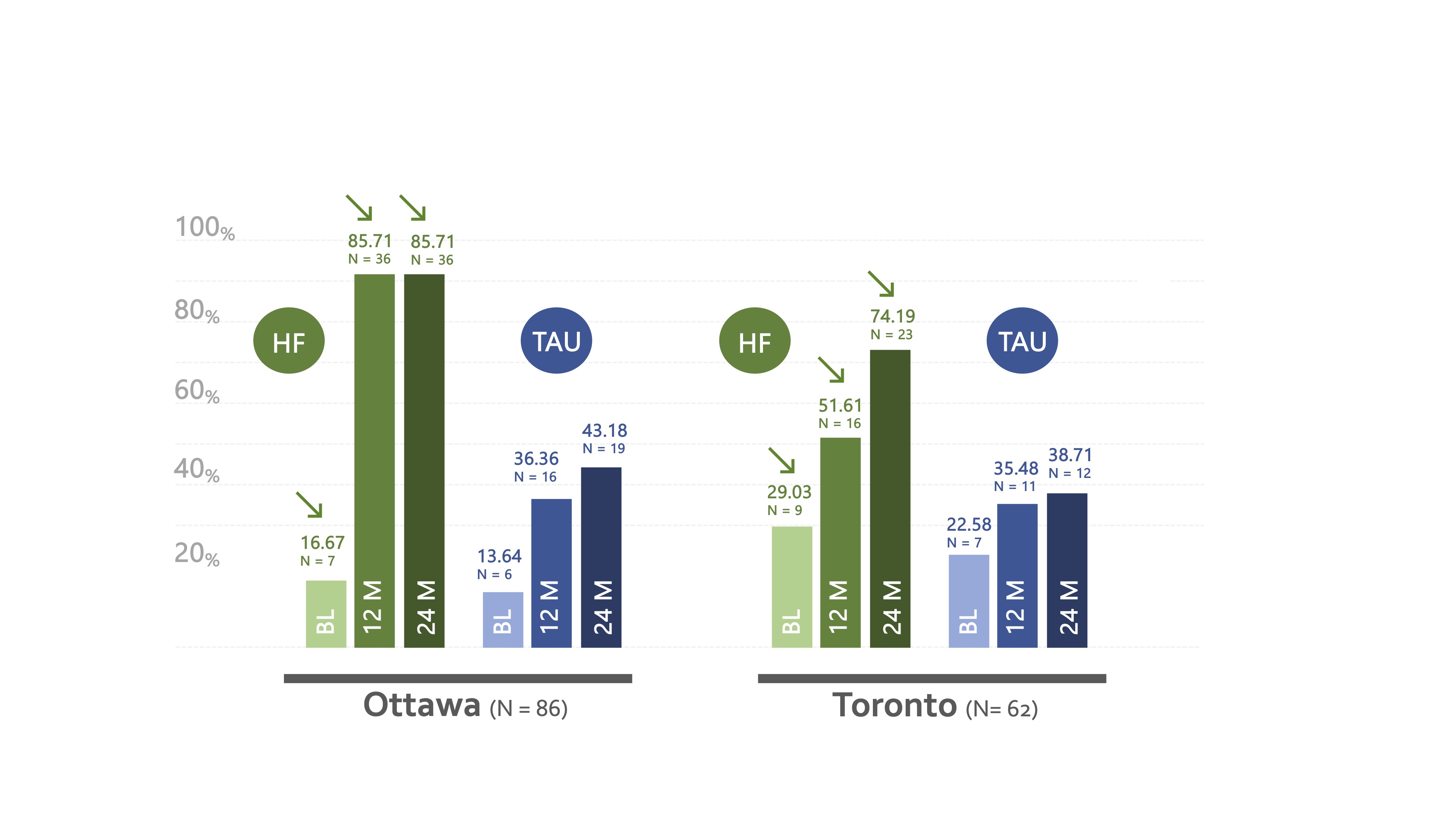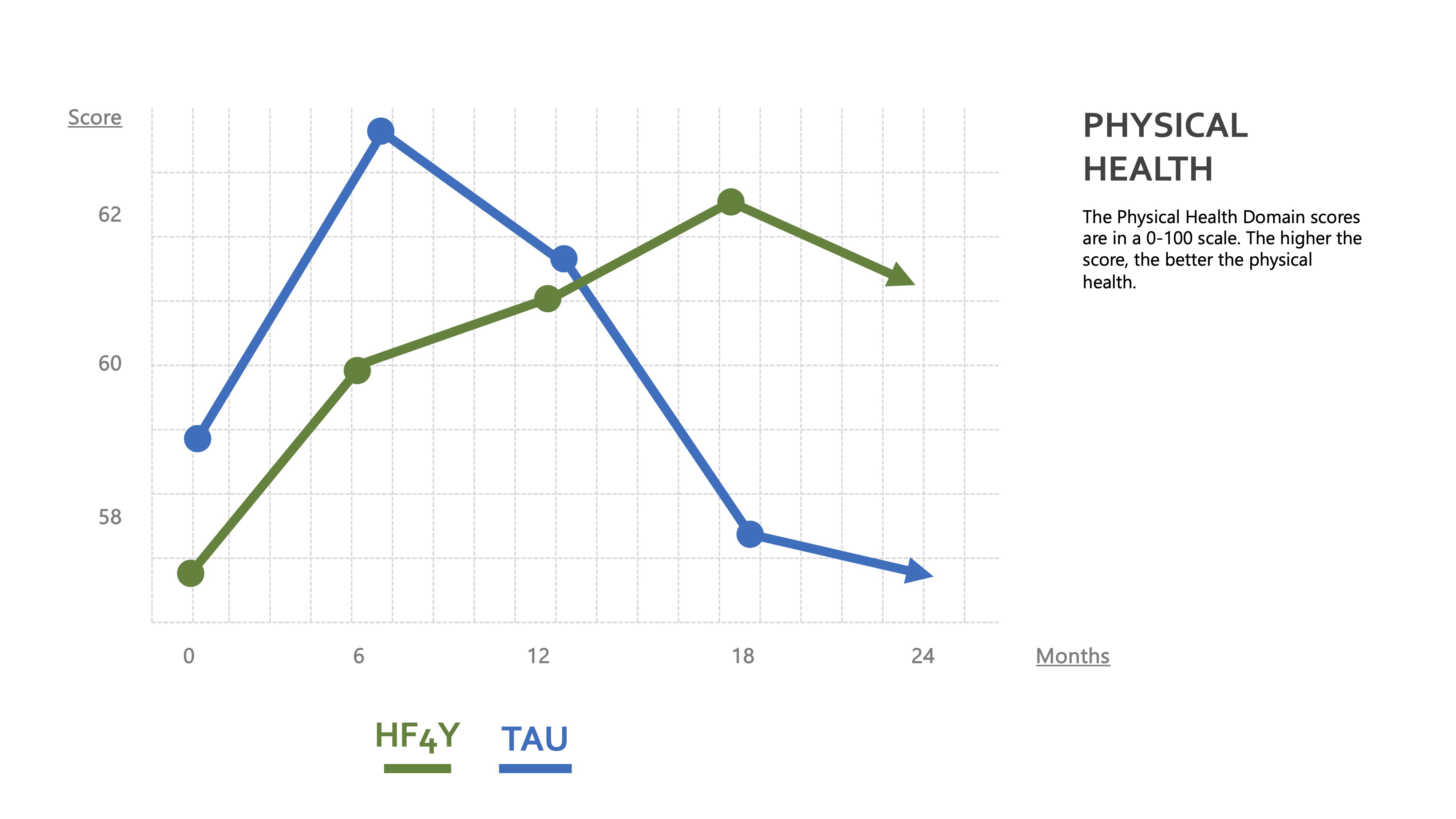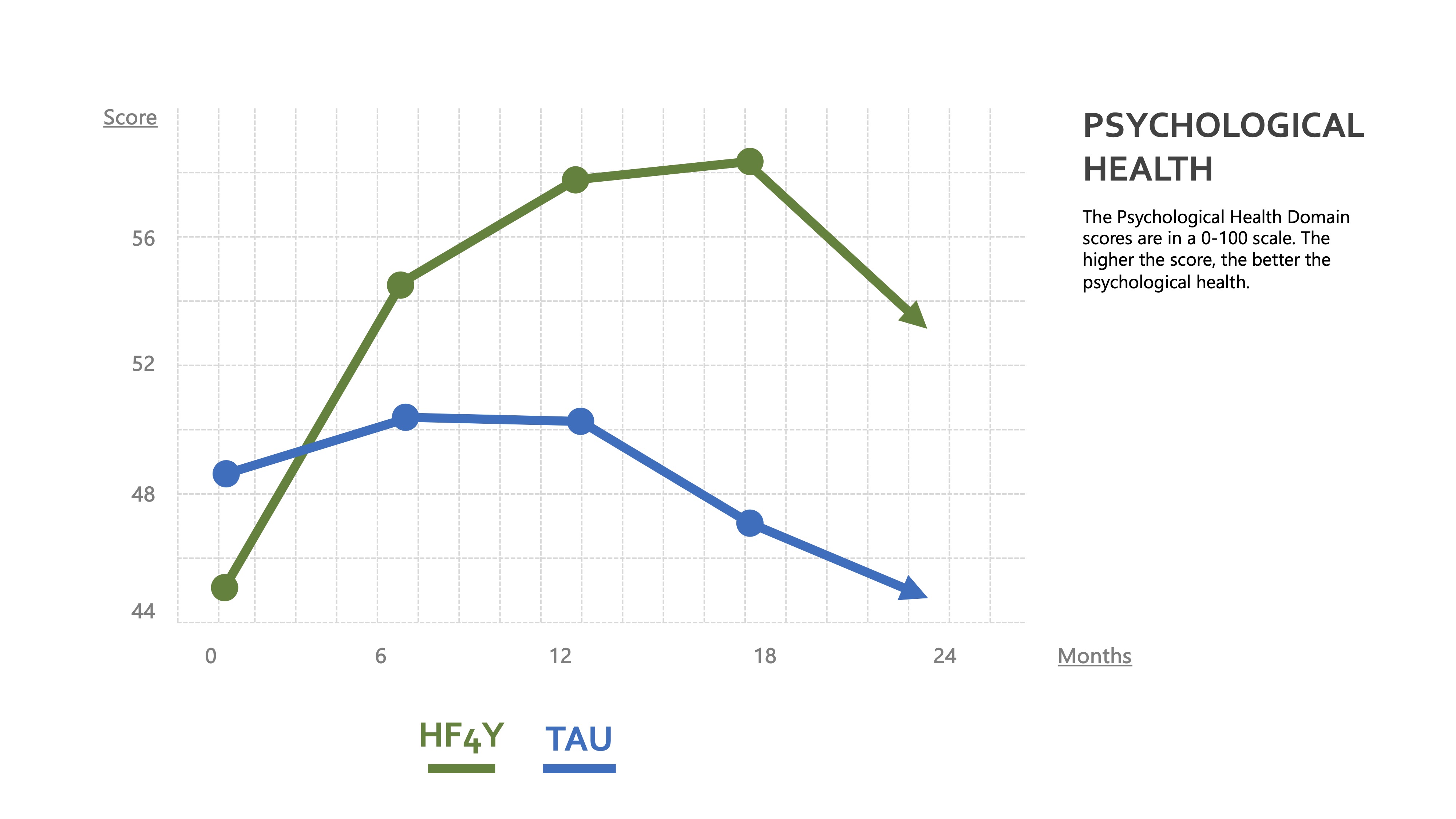Previous research has demonstrated that Housing First can be effective in preventing homelessness among adults in Canada. With no preconditions, such as abstinence from substances, ‘Housing First’ is a recovery-oriented approach that moves people experiencing homelessness into permanent housing and then provides them with additional supports as needed. The key basis of Housing First is that people are better able to move forward with their lives if they are first housed, or in other words, having a secure place to call home is an essential first step for an individual’s recovery journey.
While we know that the Housing First approach can lead to greater long-term housing stability for adults experiencing homelessness, there is limited information on whether Housing First can improve outcomes such as stable housing, health and well-being for young people at risk of or experiencing homelessness. As a result, Housing First for Youth (HF4Y) was developed to support individuals aged 16-24 who are experiencing homelessness. Recognizing that this population has distinct needs, HF4Y works to support young people beyond simply providing housing and facilitates a healthy transition to adulthood.
To address a critical gap in research and assess whether the HF4Y program model results in better outcomes in young people’s lives, this blog will discuss key learnings from a pilot study conducted by the Making the Shift (MtS) Youth Homelessness Social Innovation Lab in two urban settings in Canada: Toronto and Ottawa.
Evaluating Housing First for Youth in Canada
The HF4Y study employed a randomized controlled trial (RCT) method over 24 months in Ottawa and Toronto. It measured the effectiveness of the HF4Y program by looking at outcomes such as housing stability, health, well-being, access to education and employment, support services, and social inclusion.
Key Findings: Housing Stability
The findings indicated that HF4Y participants in Ottawa and Toronto showed a considerable improvement in housing stability. For example, in Ottawa, the HF group showed a significant increase in housing stability, rising from 16.7 percent at baseline to 85.7 percent at both 12 and 24 months. In contrast, the treatment-as-usual (TAU) group, who did not receive the HF4Y intervention, showed considerably slower progress, beginning at 13.6 percent at baseline, reaching 36.6 percent at 12 months, and only 43.18 percent at 24 months.

This is exciting because the observed improvements in housing stability will likely lead to reduced hospital and emergency services usage, improved clinical outcomes (such as psychiatric symptoms and substance use), and decreased involvement in the criminal justice system.
Key Findings: Physical and Psychological Health
Young people who went through HF4Y also displayed consistent improvements in physical and psychological health during the initial 18 months. For example, when considering both Ottawa and Toronto, the HF group demonstrated a significant increase in physical health from 57 percent at baseline to 59.9 percent at 6 months and further to 61.8 percent at 18 months. In contrast, there was a notable decline in the physical health of the TAU group, decreasing from 63.1 percent at 6 months to 57.8 percent at 18 months. There was also less of an improvement in psychological health among this control group.


The Bigger Picture: Implications for Policy and Practice
These preliminary findings show us that HF4Y shows great promise for addressing youth homelessness in Canada and potentially other countries. These insights can help transform policies and programs to better address the unique challenges faced by youth experiencing homelessness. Rather than merely managing crises, our findings remind us that it is critical for society to invest resources upstream by providing support to those at risk of housing precarity.
The MtS Youth Homelessness Social Innovation Lab will continue to evaluate HF4Y Demonstration projects and work towards translating research into practical solutions for youth homelessness.
Acknowledgements: The authors would like to thank Sallah Drammeh and Lauren Mar for assisting in data analysis.
-------------
This post is part of our #CAEH23 blog series which highlights research on preventing and ending homelessness that is being presented at the 2023 National Conference on Ending Homelessness, November 8-10 in Halifax, NS. Learn more about the authors’ work through their session entitled “Preventing Youth Homelessness / Prévenir l'itinérance chez les jeunes.”




